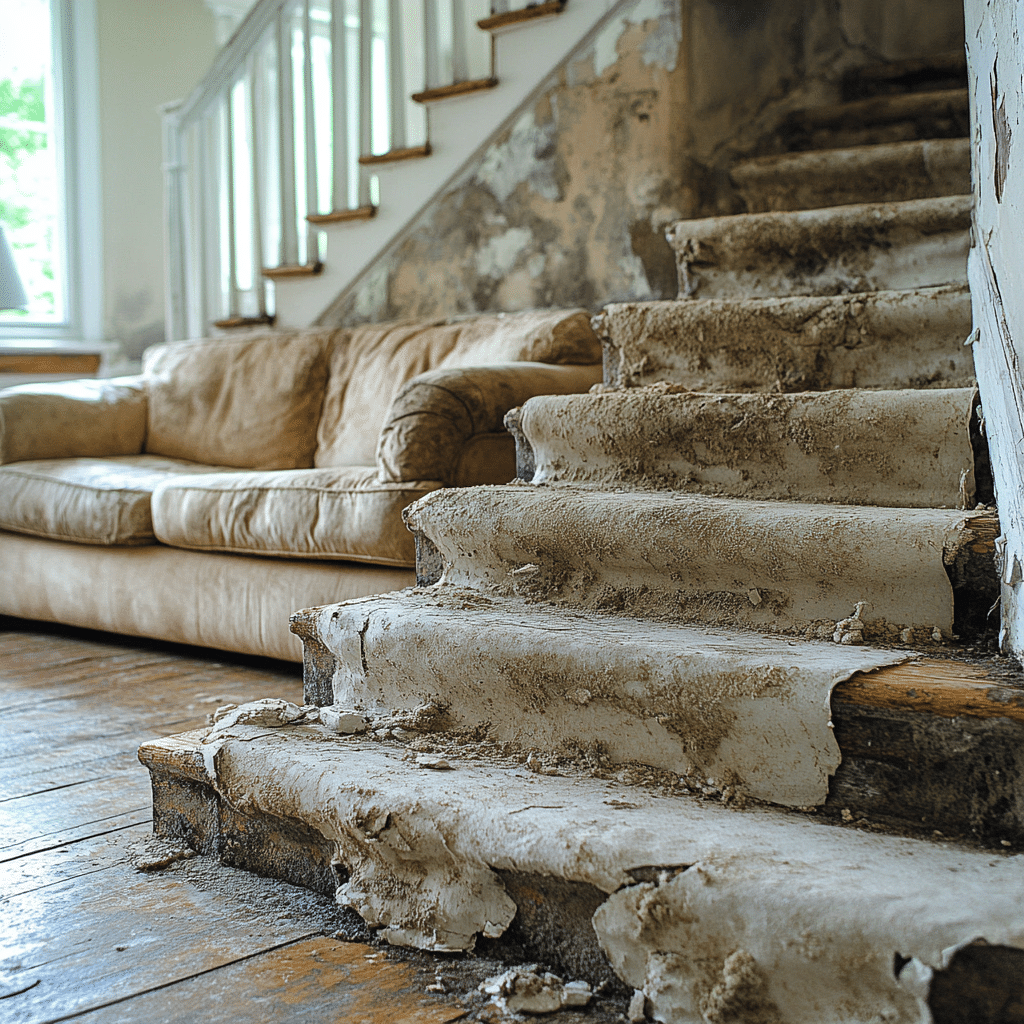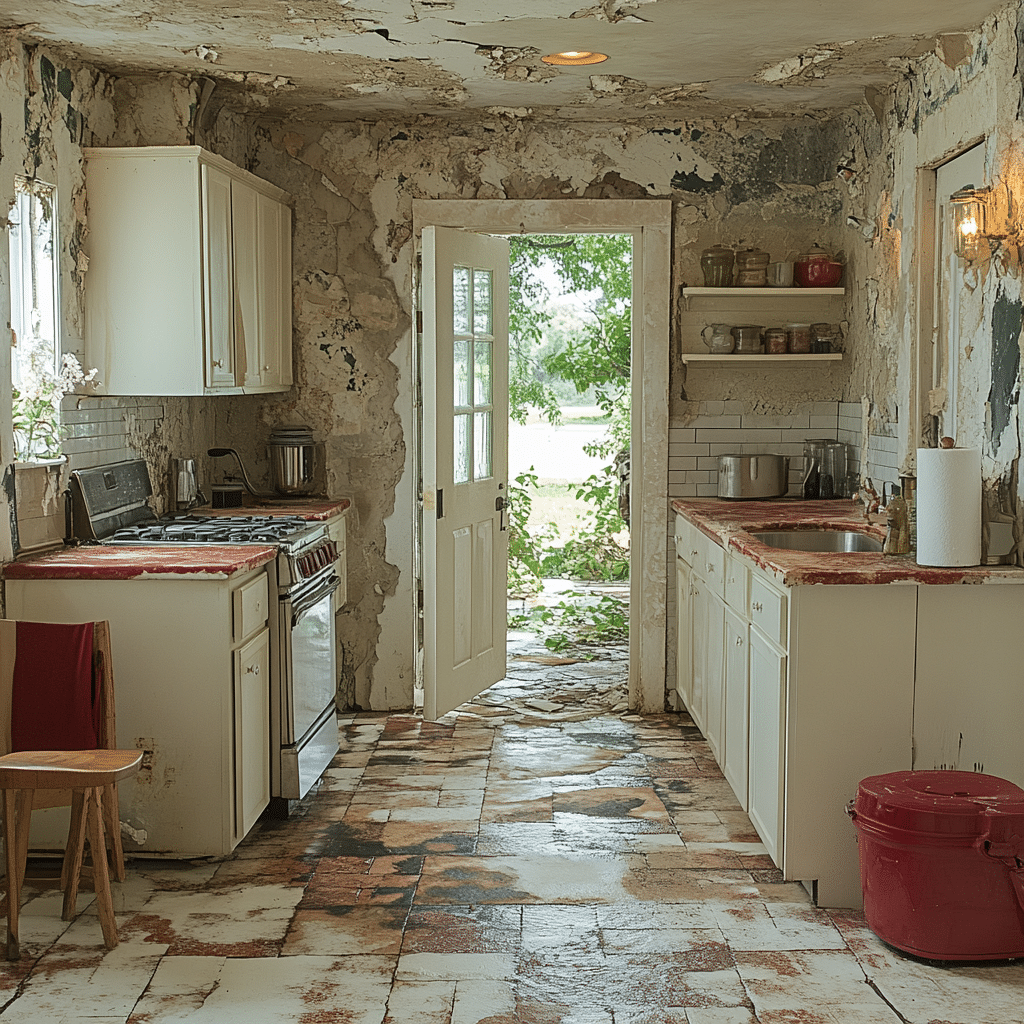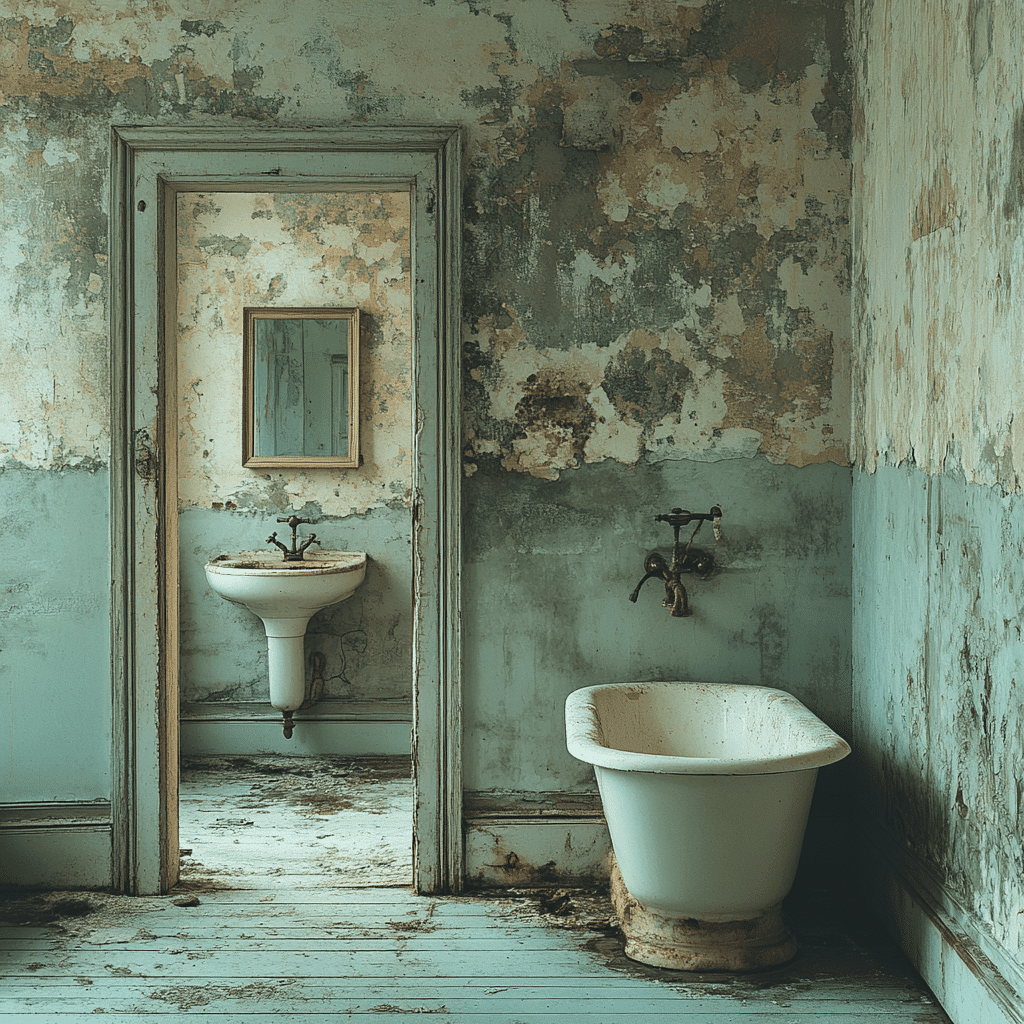Mold In Home: Identifying Health Dangers and Prevention Tips
When thinking about our homes, we often focus on decor, comfort, and safety. But what about the hidden dangers lurking within? Mold in the home is more common than you’d imagine, and it can have serious health risks that many homeowners overlook. Let’s get deep into understanding the health risks and prevention strategies for mold in your house.

The Hidden Dangers: Health Risks of Mold in Your House
Mold in the home can pose serious health risks that many homeowners often underestimate. While mold is typically associated with respiratory problems, its health implications are far broader:
- Respiratory Issues: Exposure to mold spores can aggravate asthma and trigger allergic reactions, causing symptoms like coughing, wheezing, and shortness of breath. Studies by the Environmental Protection Agency (EPA) indicate that prolonged exposure to mold can lead to chronic respiratory conditions.
- Skin Irritations: Direct contact with mold-infested surfaces can lead to skin rashes and itching. Dermatologists highlight cases where repeated exposure results in persistent skin conditions.
- Neurological Effects: Some molds produce mycotoxins, which have been linked to neurological symptoms such as headaches, memory loss, and mood swings. The International Journal of Molecular Sciences published research connecting long-term mold exposure to cognitive impairments.
- Weakened Immune System: Individuals with weakened immune systems, such as infants, the elderly, or those with autoimmune conditions, are more susceptible to mold-related illnesses. Immunologists indicate that mold can exacerbate existing health issues, leading to more severe outcomes.
Whether you live in a bustling city like Milwaukee, where air quality continues to be a concern, mold in your home adds an extra layer of risk. So how do you spot this invisible threat?

Identifying Mold in the House: Common Types and Signs
Recognizing mold is the first step in preventing its health risks. The following are common types of molds found in homes and their typical signs:
- Aspergillus: Often found in damp climates, Aspergillus can grow on food, walls, and insulation. It typically appears as green, yellow, or black patches and can cause allergic reactions.
- Cladosporium: This mold grows on both painted and unfinished surfaces, including wood and textiles. It’s known for its dark green or black color and can trigger asthma attacks.
- Stachybotrys (Black Mold): Known for its black, slimy appearance, this mold thrives in areas with high humidity and is notorious for releasing mycotoxins that can cause severe health issues.
Knowing what to look for can be lifesaving. Everything you need to maintain a mold-free home begins with awareness.
| Aspect | Description |
| Types of Mold | – Allergenic: Causes allergies and asthma attacks (e.g., Cladosporium) – Pathogenic: Can cause infections (e.g., Aspergillus) – Toxigenic: Produces toxic substances (e.g., Stachybotrys or ‘Black Mold’) |
| Common Locations | – Bathrooms – Kitchens – Basements – Attics – Crawlspaces – Around windows – Under sinks |
| Health Risks | – Respiratory issues – Allergic reactions – Asthma trigger – Skin irritation – Headaches – Severe reactions in immunocompromised individuals |
| Prevention Methods | – Use dehumidifiers – Improve ventilation – Fix leaks promptly – Use mold-resistant products – Regularly clean and disinfect areas |
| Treatment Options | – DIY Cleaning: Using bleach, vinegar, or commercial mold removers – Professional Mold Remediation: In cases of extensive mold infestation |
| Symptoms of Mold | – Musty odor – Visible spots on walls, ceilings, and other surfaces – Water stains – Discolored or warped walls |
| Costs | – DIY Cleaning Products: $10-$50 – Professional Remediation: $500-$6,000 or more depending on extent and location of mold |
| Testing for Mold | – Home test kits: $10-$50 – Professional mold inspection: $200-$600 |
| Legal Considerations | – Landlord-tenant laws may require landlords to address mold issues promptly – Homeowners insurance may cover mold remediation, depending on the cause and policy specifics |
| Benefits of Removal | – Improved air quality – Reduced health risks – Prevention of structural damage – Enhanced home value |
Effective Strategies for Preventing Mold in the Home
Preventing mold growth is crucial for maintaining a healthy living environment. Implementing the following strategies can significantly reduce the risk:
- Control Humidity Levels: Keep indoor humidity below 60% using dehumidifiers. Brands like Honeywell and Frigidaire offer reliable dehumidifiers that can help maintain optimal humidity levels.
- Ensure Proper Ventilation: Use exhaust fans in bathrooms, kitchens, and laundry rooms to reduce moisture. Installing vents from reputable manufacturers like Panasonic can enhance air circulation.
- Fix Leaks Immediately: Address any leaks in roofs, windows, and pipes promptly to prevent unnecessary moisture buildup. Regular inspections by professionals, such as those from Roto-Rooter, can help identify and fix potential issues.
- Use Mold-Resistant Products: When renovating, consider using mold-resistant drywall and paint. Brands like Perma-Green and Zinsser offer products specifically designed to resist mold growth.
- Maintain Cleanliness: Regularly clean and dry areas prone to moisture, including bathrooms and basements. Using cleaning agents that contain antifungal properties, such as those from Clorox, can further deter mold growth.
Controlling humidity, ensuring proper ventilation, and staying on top of repairs can make a world of difference in preventing mold-related health issues.
Real-Life Case Studies: Handling Mold in Your House
Emily’s Experience with Basement Mold
Emily, a homeowner in Seattle, discovered mold in her basement after a prolonged rainy season. She enlisted the help of Servpro, a professional mold remediation service. Through their thorough assessment and effective treatment plan, including the use of HEPA air scrubbers and antifungal sprays, Emily successfully eradicated the mold. Lessons from her experience highlight the importance of professional intervention in severe cases.
The Stevens Family and Mold-Resistant Renovations
After his son developed asthma, John Stevens from Boston decided to remodel his house with mold-resistant materials. Collaborating with a local contractor, they used CertainTeed’s mold-resistant drywall and Benjamin Moore’s acrylic paint. This proactive approach not only improved indoor air quality but also significantly reduced the risk of mold recurrence.
These case studies underscore the necessity of both preventative measures and professional help when mold becomes a serious issue.
Promoting a Healthier Home Environment
Creating a mold-free home environment demands vigilance, regular maintenance, and an understanding of the risks and preventive measures. By controlling humidity, ensuring proper ventilation, addressing leaks promptly, using mold-resistant products, and maintaining cleanliness, homeowners can mitigate the health risks associated with mold.
Embrace a proactive approach and protect the well-being of your household by staying informed and implementing effective strategies against mold growth. Prevention is both simpler and more cost-effective than remediation, making it a wise investment for the health and safety of everyone in the home.
Ready to invest in a mold-free home environment? Looking to secure a mortgage that supports your life’s necessities? Take a look at some good Investments right now and learn How To invest money To make money with MortgageRater.com for all your real estate needs. Stay healthy and keep your home free of mold!
Mold in Home: Fascinating Facts and Trivia
Mold Can Thrive in Unexpected Places
When you think about mold, your mind probably conjures up images of damp basements or leaky attics. But did you know that mold can also be found in places you least expect? It’s true! For example, if you ever stayed at the Embassy Suites by Hilton Baltimore Hunt Valley, it’s worth noting that even top-of-the-line hotels need to keep a vigilant eye on mold prevention strategies. In fact, even luxury accommodations sometimes face these sneaky intruders, which can affect both health and overall air quality.
Surprising as it may seem, mold spores can spread rather quickly and even latch onto your personal belongings. For instance, water damage after a storm or a flood often leads to rapid mold growth. As you’re relaxing on a blessed Friday, enjoying peace and quiet, mold could be silently spreading. Mold doesn’t need visible puddles to thrive; elevated humidity levels alone are enough.
Mold and Your Investments
Beyond health risks, mold can also impact your portfolio investing endeavors. Homes and rental properties plagued with mold problems can see a serious dip in their market value. Potential buyers or tenants are generally wary of properties needing extensive mold remediation. Imagine an investor discovering extensive mold damage after purchasing a property—it’s a financial blow no one wants to endure.
Delving Deeper,( mold-related grievances can also turn into legal nightmares. It’s not uncommon for buyers to sue sellers over undisclosed mold issues, which can eat into profits and complicate transactions. For this reason, thorough property inspections are non-negotiable. It’s ironic, but even in financial endeavors, mold finds a way to stir the pot.
Health and Safety First
Mold isn’t just a financial nuisance; it can seriously affect one’s well-being. Poor indoor air quality due to mold, akin to documented cases in air quality Milwaukee, can lead to a raft of health issues, from allergies to more severe respiratory complications. Long-term exposure, especially for those with weakened immune systems, can be particularly disastrous.
If a friend or family member faces persistent health issues triggered by mold, offering support similar to a loss of daughter gift can be profoundly meaningful. Emotional and practical assistance can help navigate these challenging times. Ensuring your living environment is mold-free isn’t just about safeguarding property—it’s about keeping your loved ones safe and healthy.
Curious to learn more about how avoiding mold could make you feel part of the 1 percent healthier individuals in your area? Mold prevention can significantly enhance your quality of life. Small steps like using dehumidifiers and ensuring good ventilation work wonders. So, a little proactive effort now can save a bucketload of trouble—and money—down the road.



